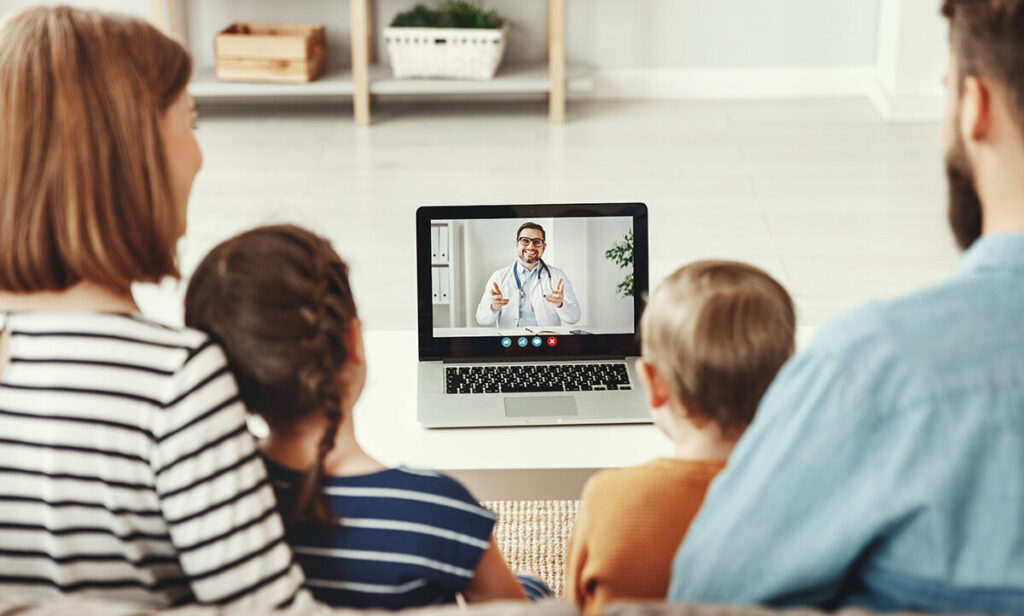By Amy Wood, RAWF Executive Director
We all know these last few months have not been short on challenges but one good thing, in my opinion, that has come out of this ongoing global pandemic is telehealth. By now most of us have experienced a telehealth appointment and, while they certainly can have their technical glitches, from my perspective of a caregiver of a chronic pediatric patient, the pros far outweigh the cons.
My son, a child survivor of a craniopharyngioma brain tumor, sees multiple specialists — endocrinology, neurology, pulmonary, behavioral psychology and quarterly well checks with his pediatrician. We live in a more remote area in coastal Maryland, hours from CHOP or Hopkins, his treating hospitals. Telehealth has saved me literally hours on the road not to mention hours in a waiting room. For my son, doctor visits occupied a major part of his life and telehealth has improved his quality of life by giving him his time as a child back and allowing him to be in his comfortable environment during these routine follow ups. In fact, when we did have to report in person to an appointment recently, I gave real thought to switching doctors since this provider doesn’t offer telehealth after we drove 45 minutes each way and waited almost an hour for a 15 minute appointment.
Telehealth has also opened doors to access to care and specialists we couldn’t get to prior. He was receiving behavioral therapy locally but, because of his rare conditions, that person was not as well-versed in how his brain works or the impact of the tumor and how it manifests in his behavior. Now, he is receiving therapy services from Kennedy Krieger in Baltimore from psychologists that have experience in his tumor type and the trauma issues that come with the experience of routine sudden hospitalizations.
There are some visits that may involve testing or hands on that just can’t be done online, but it seems that when it is possible for more consultative visits, most doctors seem to like it as well because it gives them more time to focus on patients with less distractions.
So the big question – is it here to stay? According to a survey by Black Book Market Research, 25% of respondents used telehealth prior to the pandemic, 59% of respondents are more likely to use telehealth now than previously and 36% would switch physicians to have access to virtual care.
According to Forbes in the article 5 Reasons Why Telehealth is Here to Stay (COVID-19 and Beyond, “There are inherent limits of video-only telehealth technology, but when you combine medicine with technology, the possibilities are endless and big investments are being made in telehealth.”
As a big fan of telehealth, I am doing everything I can as a patient to personally ensure its success. I’ve download and tested out apps to take vitals, I log in early to make sure my connection is working and audio is clear. I put Alex in his doctor’s appointment uniform of a collared shirt and set him up with comfortably with things to keep him occupied while on screen. I see it as doing my part to make it successful in hopes that this is the way of the future and doesn’t go away when the pandemic is history.
The Raymond A. Wood Foundation sees so much possibility in technology as a source of solutions for the needs of survivors of brain tumors involving the hypothalamus that can produce so many complex issues. Telehealth is a way that providers that specialize in certain conditions can see patients that need their expertise in a this way, removing the limitations of geography or travel expenses. I hope to see this model stays and evolves to provide more options for patients with rare diseases.


